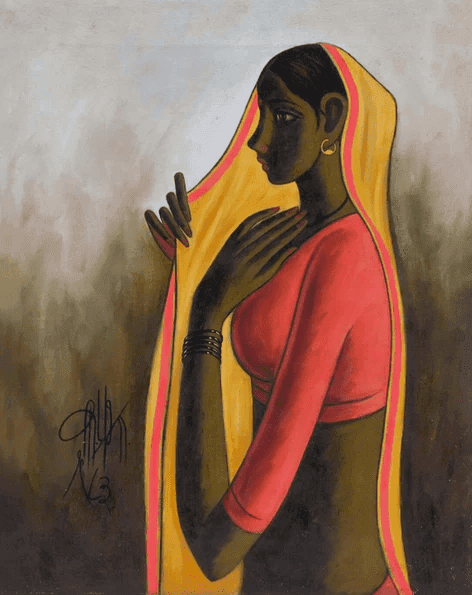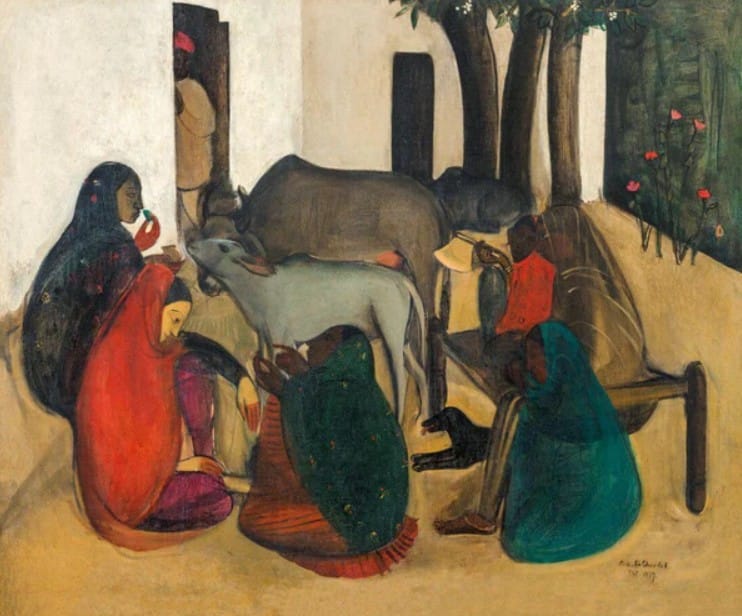The Role of Indian Women Artists in Shaping Art History
Introduction
For centuries, Indian art has thrived in palaces, temples, homes, and the streets, evolving through waves of cultural and political transformation. But within this rich history, the role of Indian women artists has often been obscured—overshadowed by patriarchal structures, overlooked by mainstream art historians, and underrepresented in galleries. And yet, women have always been creating. From tribal murals to global installations, they have painted, sculpted, embroidered, and performed their way into the visual narrative of India. This blog explores the profound contributions of Indian women artists in art history, uncovering their influence, struggles, and continued rise in the contemporary art world.
Silent Origins: Women in Traditional and Folk Arts
Long before formal art education and curated exhibitions, women across India were creators of artistic traditions rooted in ritual and community. In rural villages and tribal areas, art was not a luxury—it was life itself. Women painted on walls, floors, fabric, and pots, embedding cultural memory into their creations.
In Bihar, Madhubani art emerged from the hands of women who illustrated religious stories and local folklore on mud walls during weddings and festivals. These vibrant compositions—filled with natural dyes and geometric patterns—became part of the collective cultural consciousness. Artists like Sita Devi and Bauwa Devi later brought Madhubani to paper and gained national recognition, breaking the rural-urban divide.
In Maharashtra, Warli art, traditionally practiced by Adivasi women, depicts scenes of nature, farming, and daily life through elegant white line drawings on ochre backgrounds. In Odisha, Pattachitra paintings evolved through the devotion of women artists illustrating stories of Krishna and Jagannath with meticulous detail.
These forms weren’t initially recognized as “fine art,” but their influence is now impossible to deny. They form the roots of Indian visual culture—and they were led by women.
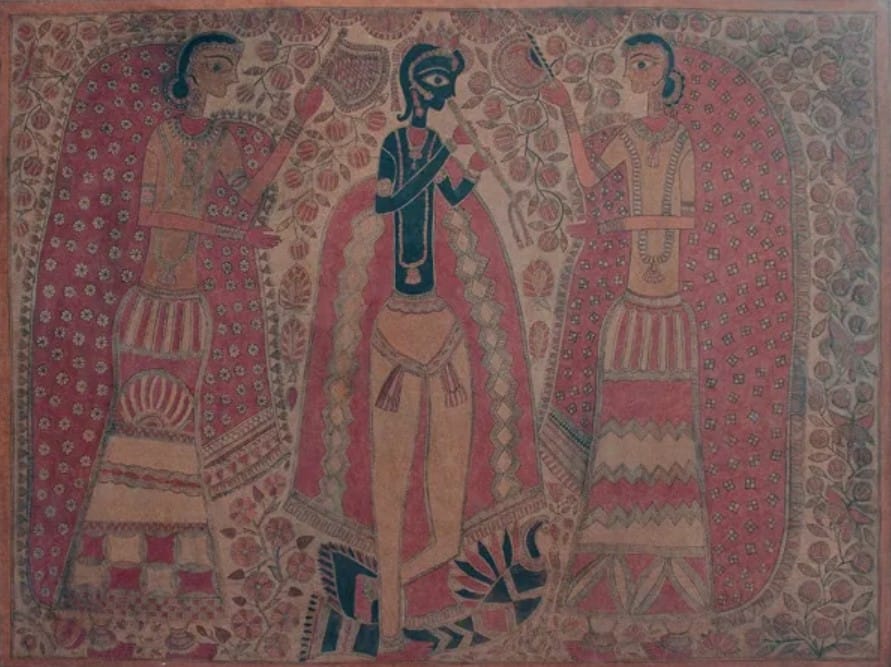
The Arrival of a Modern Voice: Amrita Sher-Gil
If any one figure signaled a shift from anonymous folk traditions to individual artistic recognition, it was Amrita Sher-Gil. Born in 1913 to a Hungarian mother and Sikh father, Sher-Gil was educated in Paris at the École des Beaux-Arts. Her early works reflect her Western influences—impressionistic portraits and nudes—but upon returning to India, she began to explore her Indian identity with powerful introspection.
Sher-Gil painted Indian women not as passive figures but as complex individuals—tired, thoughtful, waiting, burdened. Her masterpieces like Three Girls, Bride’s Toilet, and Woman on Charpoy presented Indian femininity with honesty and empathy. Her ability to blend European technique with Indian subjects made her a pioneer in the modern Indian art movement.
Despite her tragic death at the age of 28, Sher-Gil’s legacy remains profound. She opened doors for generations of Indian women to pursue art not just as expression, but as rebellion and affirmation.
“Learn more about Amrita Sher-Gil’s life and legacy at the Tate Museum.”
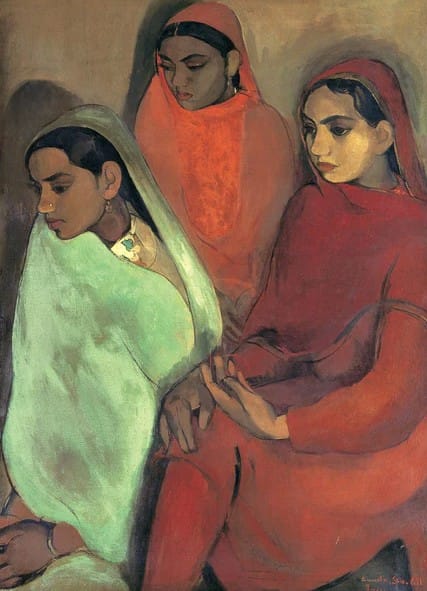
Post-Independence: Art as Feminist Resistance
After 1947, India entered an era of reinvention—politically, socially, and artistically. The modernist wave brought new freedoms, and female artists began to challenge gender roles and assert their voices through art. These women were no longer painting within domestic walls—they were now in galleries, art schools, and international exhibitions.
Anjolie Ela Menon, known for her melancholic figures and semi-abstract compositions, emerged as one of India’s first post-independence female stars. Her portraits, often of women and saints, fuse the sacred and sensual in a deeply Indian yet universal visual language.
Arpita Singh explored memory, mythology, and the female psyche through dreamlike canvases filled with layered symbolism. Her art resonates with themes of aging, displacement, and resistance, often featuring central female figures navigating complex emotional landscapes.
Nalini Malani, a trailblazer in multimedia art, used installation, shadow play, and video to address violence, marginalization, and gender politics. Her works such as The Tables Have Turned blend myth with activism, pushing boundaries of medium and message.
These artists didn’t just depict women—they reclaimed the space of the artist for women.
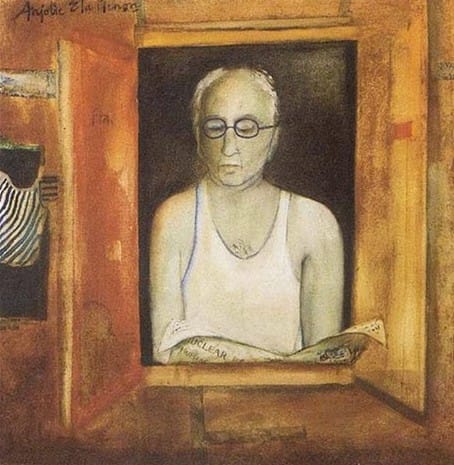
Breaking the Global Barrier: Contemporary Innovators
In recent decades, Indian women artists have not only gained national prominence but have also become powerful voices in the international art world. Their works are included in prestigious collections, biennales, and museums across the globe.
Bharti Kher is known for her use of the bindi—a symbol of Indian femininity—as a central motif. Through large-scale installations and sculptural forms, Kher challenges ideas of identity, gender, and hybridity. Her 2006 sculpture The Skin Speaks a Language Not Its Own, featuring a life-size elephant covered in bindis, gained international acclaim.
Pushpamala N., a performance and photo-based artist, parodies cultural tropes by embodying them. In her Native Women of South India series, she dresses up as various stereotypical “types” of Indian women—dancer, tribal, nun, courtesan—deconstructing how Indian femininity is viewed and constructed.
Reena Saini Kallat uses electrical wires, stamps, and maps in her multimedia work to explore identity, migration, and historical erasure—often linked to women’s experience in divided geographies.
Sheela Gowda, working with everyday materials like incense, thread, and cow dung, creates minimalist yet politically loaded works dealing with labor, caste, and womanhood.
These contemporary artists are rewriting not only the canon of Indian art—but that of global art history.
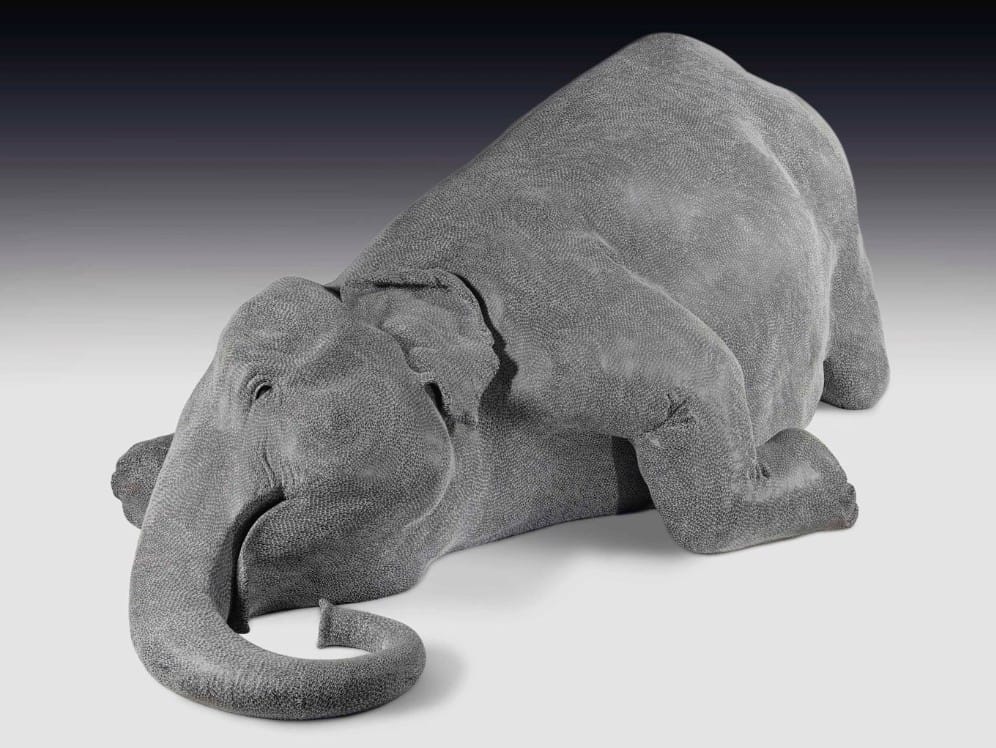
Obstacles and the Ongoing Fight for Visibility
Despite their contributions, Indian women artists still face challenges within the art ecosystem. They are underrepresented in major galleries, their work often undervalued in comparison to male contemporaries, and they are less likely to be included in art history curricula or auction house highlights.
A 2023 study on gender representation in Indian art institutions revealed that less than 10% of solo exhibitions in major Indian galleries featured women artists. Additionally, the art market continues to favor male modernists, with top-selling artists overwhelmingly male.
The art world must now ask: who decides value? Who curates history? Unless we continue to archive, study, collect, and support female artists, their stories risk fading again.
That’s why initiatives like ISKUSS, which promote culturally-rooted contemporary art on global platforms, are essential to ensuring that Indian women artists are seen, valued, and remembered.
Conclusion: A Legacy That Cannot Be Erased
The narrative of Indian women artists in art history is one of resilience, creativity, and quiet revolution. From anonymous creators in tribal villages to internationally celebrated conceptualists, Indian women have shaped every phase of the country’s visual history. Their works speak across time—of devotion, rebellion, identity, trauma, beauty, and resistance.
Today, as art historians and collectors look beyond the traditional canon, the contributions of Indian women can no longer be sidelined. Their legacy is vast, their voices growing louder, and their impact undeniable.
The next chapter in Indian art history will not be complete without them—because they’ve been writing it all along.
